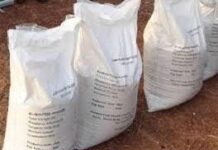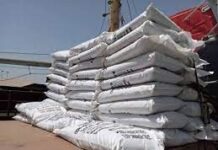This column is devoted to monitor and report on issues that relate  to production, processing, preservation and marketing of agricultural produce, aimed at ensuring food security in the Gambia as well as the interventions of Government and Non-governmental Organizations in this regard.
to production, processing, preservation and marketing of agricultural produce, aimed at ensuring food security in the Gambia as well as the interventions of Government and Non-governmental Organizations in this regard.
Agriculture remains both a new and old source of national revenue and (youth) employment.
Improved public awareness and discussion of the issues involved, will significantly maximize agricultural outcomes and the contribution of the sector to economic growth and job creation.
This is precisely the reason why Farmers’ Eye is critically looking at every Agricultural programme or policy to gauge whether our Agriculture and Natural resources are properly harnessed to ensure food self-sufficiency.
We indicated that GNAIP has six programmes and started dealing in the last edition, with programme 3. In this edition, we shall continue with the rest of the components of programme 3 ie: Development of Agricultural Chains and Market Promotion (USD89.85Million).
In the last edition we indicated that the objective of this programme is the transformation of the agricultural sector from a traditional subsistence economy to a modern market-oriented commercial sector with well integrated food chains and a viable agro-processing private sector, resulting in increased incomes of agricultural value chain actors (including farmers, input suppliers, processors, traders and exporters) and that the programme aims to reduce imports of cheap food by ensuring the availability of quality-standard local products, on a sustainable basis.
In this edition, we will continue with the rest of the components.
Activities, focus on expanding participation in the sub-sector through sensitization, provision of training and promoting favourable lines of credit for cooperative and marketing associations. Measures to improve marketing will be implemented (e.g. information system, trade shows, tax incentives). In addition, for poultry, support will be given to improve local production of feed and to gradually regulate imports. And as production increases, processing and storage support will also be provided.
Dairy Products Chain: The expected outcome is increased local dairy production to meet 25 percent of national demand. Activities will emphasize the increase in milk production by introducing a national artificial insemination programme as follow up to former programmes, promote private sector operators and cooperatives and establish mini dairies.
With DOA, a national market study on dairy demand will be conducted.
Fisheries Products Chain: The expected outcome is increased employment generation in the sub-sector, increased foreign exchange earnings and overall improved diets in the population. Activities include establishing needed infrastructure at fish landing sites and equipment for processing, to ensure compliance of quality and hygiene methods, training of operators on the CODEX Alimentarius guidelines and transportation improvements to increase exports regionally and internationally.
The main beneficiaries will be both industrial and artisanal fisheries operators (to include tax incentives), particularly women who are primary actors in processing (drying and smoking). Direct beneficiaries of this component will include value chain stakeholders: producers, cooperatives, processors, traders.
Women will be especially targeted for capacity building and operational support as they are the main actors involved in production and small-scale processing. Youth and especially graduates, will also be targeted. Government will be benefiting indirectly from foreign exchange savings (e.g. from reduced poultry imports




















